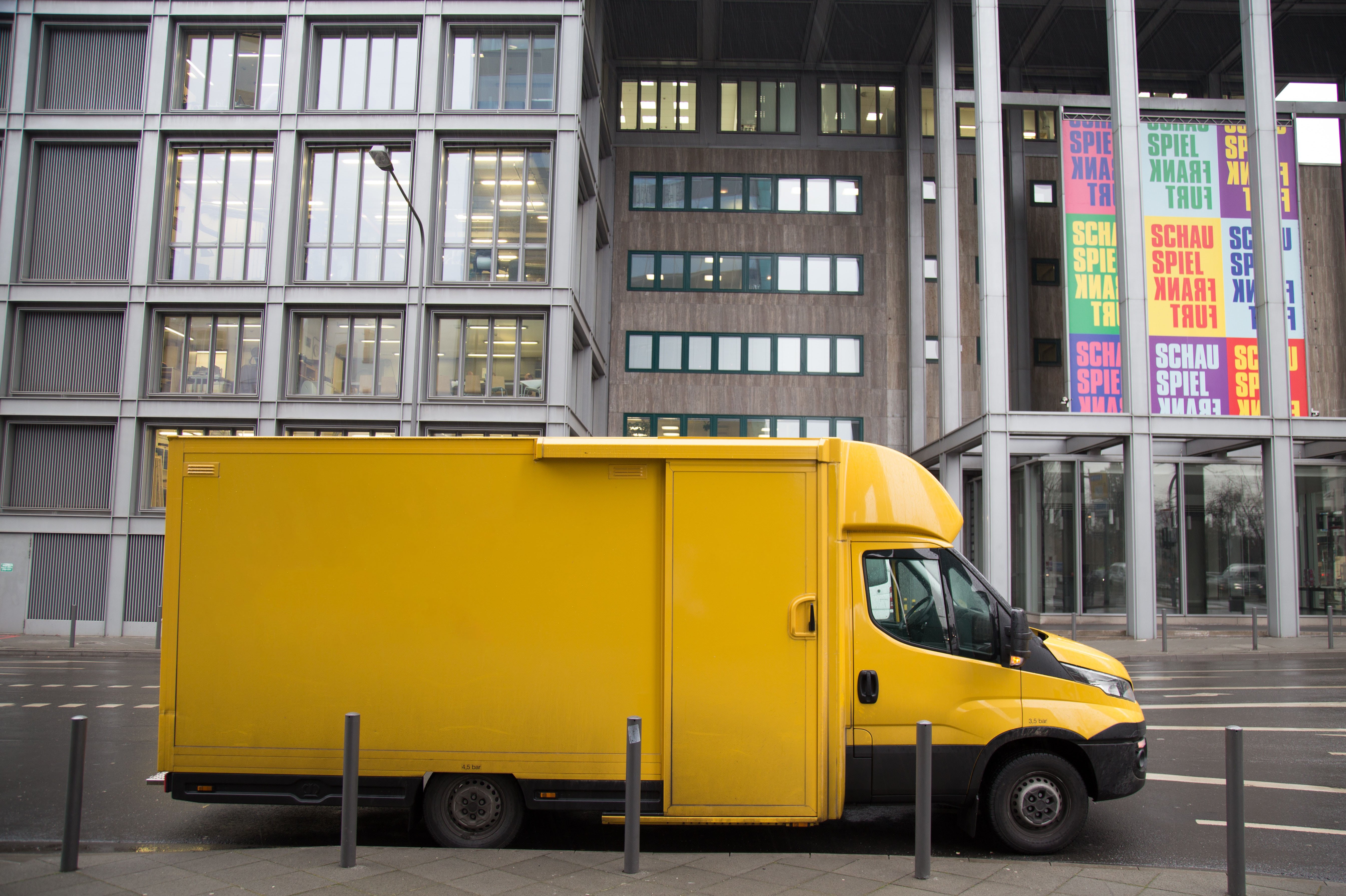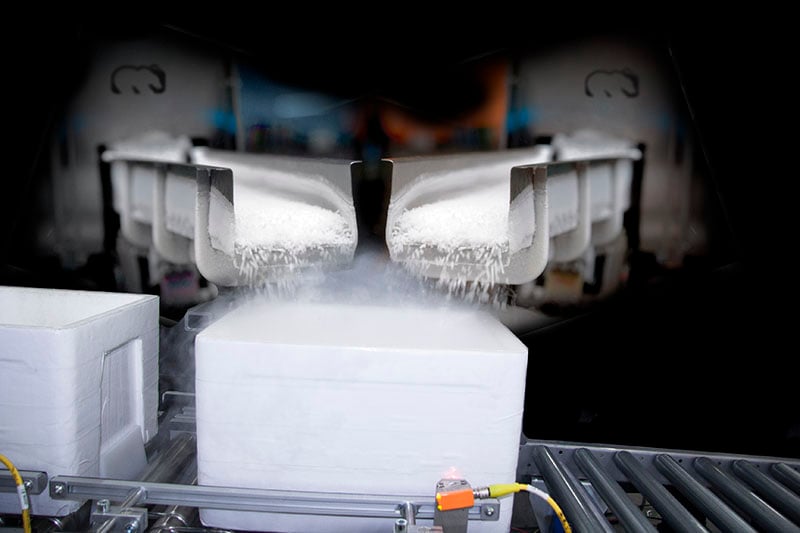Global consumers increasingly prefer to purchase goods online, which is putting pressure on e-commerce organizations to fulfill orders as quickly and efficiently as possible.
As a result, companies must develop new processes and technologies to accelerate parcel delivery while simultaneously keeping costs low.
For e-commerce companies, the last mile is often the most difficult and expensive leg of the journey. So what is the last mile? The last mile refers to the last step of the delivery process, which is the movement of goods from the distribution center to customer doorstep.
This portion of the delivery process presents many challenges for all types of e-commerce operations, but it especially affects companies that deliver perishable goods that must be kept cooled, chilled, or frozen. The need to keep goods at a consistent temperature introduces another layer of complexity.
Selecting the right cooling medium is critical to a successful last mile strategy and there are several options to consider.
.jpg?width=2560&name=blocks%20of%20dry%20ice%20(2).jpg)
Dry ice (sourcing externally)
The standard cooling medium for the shipment of perishable goods is dry ice. Due to its unique features, the medium offers many benefits to the last mile process:
- Safe around food - Dry ice is food grade media and is FDA and USDA approved for use around food. It’s also colorless, tasteless, and odorless.
- Strong cooling capacity - Dry ice maintains a consistent temperature of -109.3 degrees F (-78.5 degrees C) and keeps items cooler for longer.
- Environmentally friendly - Dry ice is a one way solution. It sublimates back to gas, leaving no water, residue, or waste. It’s also made from recycled CO2 and does not add additional CO2 to the atmosphere.
While dry ice is the preferred cooling method, the pressure to meet customer expectations on delivery times and quality, while also minimizing costs, requires e-commerce facilities to have maximum flexibility. When facilities source their dry ice externally this limits their control of dry ice quantity, quality, and form (pellets, slabs, or blocks).
The dramatic growth in e-commerce and the surging popularity of online grocery retailers has driven many companies to consider automating the packaging process at distribution centers. Sourcing dry ice externally complicates this process, as without integrated dosing or metering systems an employee must still manually apply the dry ice.
Given these concerns, some companies have begun to look at other cooling options.

Gel packs
Gel refrigerant packs are effective for cooling goods that need to be kept between 32 and 60 degrees F (0 and 15.5 degrees C). While gel packs are easier to store and handle than dry ice, they raise serious environmental concerns. Their use and potential re-use can also result in added costs.
Environmental concerns
In general, gel packs create waste that is difficult to recycle. Most consumers will simply throw the packs away, but some environmentally conscious consumers may attempt to recycle them. This can be a difficult task. In order to recycle the outside packaging, the gel must first be removed and the packaging cleaned. The packaging consists of a specialized kind of plastic that, in many areas, can only be recycled at designated recycling locations.
Removing the gel also becomes an issue. The most common substances used in gel packs, including sodium polyacrylate, are not biodegradable. That means that the gel waste will sit in a landfill and cannot be recycled.
Some companies manage ‘take-back’ programs, which allow customers to mail back the gel packs free of charge. In order to re-use the packs, the companies must first sanitize them. Besides the issue of general cleanliness, the gel packs often come into contact with dairy, vegetable, and meat products, which introduces the risk of foodborne illness.
While the take-back programs do ultimately lead to some gel packs being recycled, this introduces a considerable amount of added cost. The costs of the return shipment, sanitization, and pack re-cooling will add up quickly.

Refrigerated trucking
Another cooling option is transporting goods in trucks that are fitted with built-in refrigeration systems. This option can provide the appropriate cooling without the added step at the distribution center of applying a cooling medium into the packages.
However, the process presents logistical issues and raises serious concerns about its’ impact on the environment.
Logistical concerns
Goods that are not directly coupled with a cooling medium need to be constantly kept in a refrigerated environment. Items immediately begin to change temperature when they are taken out of refrigeration. This raises an issue when items are loaded onto the truck and unloaded for delivery.
Poor loading practices often leave perishable goods sitting on the loading dock longer than permissible. This results in a large percentage of goods being loaded onto trucks at the wrong temperatures. Further, when items reach their final destination, the customer must be home to accept the order or must agree to have the items sit on their doorstep without any type of cooling.
There is also a risk of equipment failure and driver error, which could result in a complete loss of refrigeration or the goods being kept at the wrong temperature.
Environmental concerns
Refrigerated trucks use more energy and fuel than traditional delivery trucks. They can use up to 25% more fuel and release a significantly higher amount of polluting particulate, such as refrigerant chemicals and nitrogen oxides.
Last mile delivery by refrigerated trucks becomes increasingly difficult in urban environments. In cities, roads are congested and parking is more difficult. This results in trucks being on the road longer, idling longer, and generally consuming more energy and releasing more emissions.
Cities are also beginning to introduce environmental regulations to limit fuel powered trucks in city centers. Many cities in Europe are beginning to institute low emission zones, which charge an entrance fee to fuel powered cars and trucks. For example, London charges an entrance fee for such trucks of £100 (around $130 / €120).
The use of electric trucks greatly reduces the impact on the environment and could limit the added costs of regulation, but electric vehicles are constrained by radius and battery power. It takes a significant amount of energy to make the large amount of daily deliveries required while also keeping the items cool.

Dry ice (on-site production)
Dry ice continues to be the most effective cooling medium for last mile deliveries. It offers consistent cooling, is safe for the consumer and worker, and is environmentally friendly.
Producing dry ice on-site eliminates the logistical headaches that can come with sourcing dry ice externally. Not only does on-site production give facilities greater control and allow them to produce dry ice on their schedule, it also gives them greater flexibility to meet customer demand.
Greater flexibility
All shipments have unique cooling requirements. Different quantities, sizes, and shapes of dry ice are needed based on the good being shipped, the length of the trip, and space constraints of different shipping containers.
Installing a dry ice production unit (pelletizer, slice maker, or reformer) enables facilities to produce the exact quantity of dry ice needed and in the exact size or form needed. Another added benefit is the reduction or elimination of dry ice waste.
Integrate with an automated process
On-site production also makes automation possible. Dosing and metering systems can be installed into an existing process and allow for the production of pre-programmed amounts of dry ice directly into packaging containers.
Learn about on-site dry ice production
The rate of growth in the online retailing sector will continue to climb rapidly in the coming years. Global norms and societal views on the environment and worker protection will also continue trending in the same direction. Developing a last mile strategy that is both sustainable and cost effective starts with selecting the right cooling medium. Dry ice is the only option that checks all of the boxes.
.png) English
English